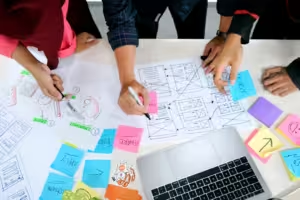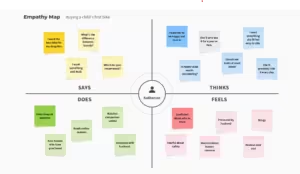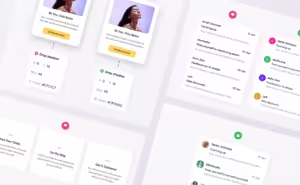Explore the transformative stages of the design thinking process—innovate, ideate, and iterate to create impactful solutions.

What is Design Thinking?
Design thinking is a creative problem-solving approach used in UX design to tackle complex challenges. It emphasizes understanding the needs, values, attitudes, and behaviors of users, placing them at the center of the solution process. This human-centered methodology helps teams generate innovative ideas quickly, leading to faster and more effective outcomes.
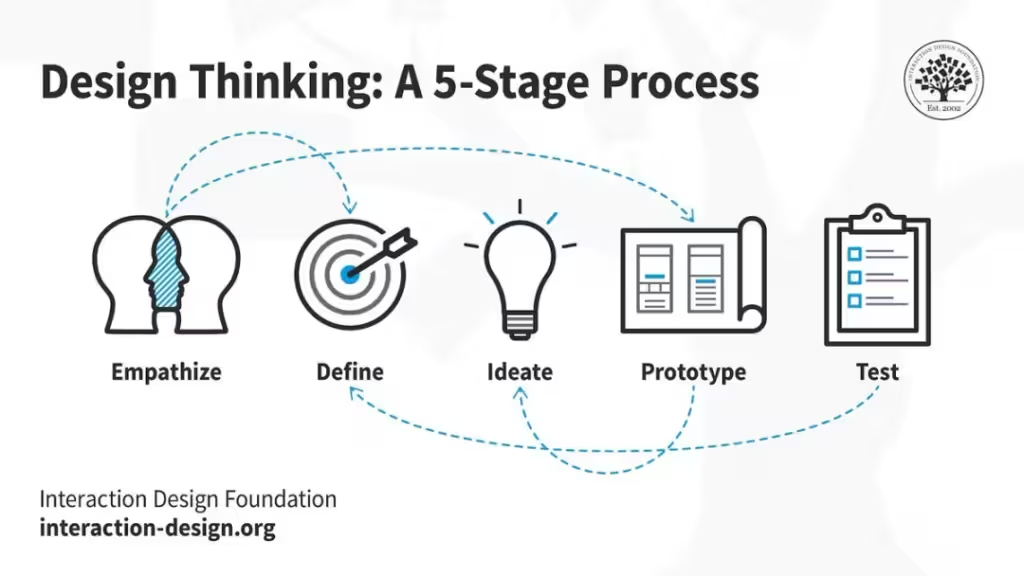
1. Understanding the Problem
The first stage of the design thinking process is to define the problem. Teams must invest time in researching and understanding customer needs, desires, and pain points to uncover opportunities for improvement. This involves gathering data from sources like surveys, user interviews, and analytics to gain a deeper understanding of who the customers are and why they act the way they do. With this information, teams can clearly define the problem they are addressing, ensuring that every subsequent decision aligns with user needs and drives meaningful solutions.
2. Define
Once the problem is defined, it’s crucial to evaluate existing solutions before creating your own. The goal is to address customer needs in ways that current solutions don’t, without simply reinventing the wheel. By analyzing existing products or services, teams can identify gaps and opportunities for improvement, allowing them to refine their focus and ensure they are tackling the right challenge with a fresh perspective.

This step of the design thinking process enables teams to identify areas for improvement and determine how to incorporate those changes into a new product or service. By understanding the needs and preferences of your target audience, creating innovative solutions becomes more focused and strategic, rather than working without clear direction.
3. Ideation
With the problem defined, it’s time to generate ideas. In this stage, teams build on the research from earlier to develop creative solutions that address user needs, preferences, and pain points. The goal is to brainstorm as many ideas as possible, without worrying too much about quality or feasibility just yet.
It’s crucial for everyone to contribute, no matter how unconventional or “offbeat” their ideas may seem. What seems like a “bad” idea might spark a breakthrough. While creativity is key, practicality should also be considered—ideas should be feasible within constraints like budget and timeline, and fit into users’ lives smoothly.
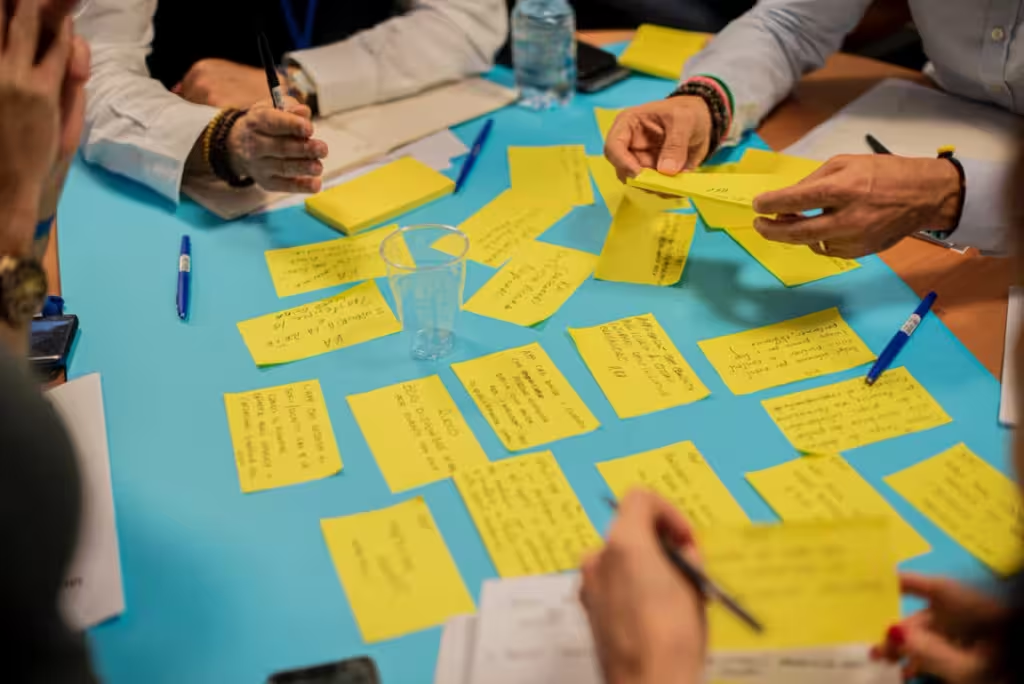
4. Prototyping
Prototyping is the stage where abstract ideas become tangible. Teams transform their concepts into prototypes—whether on paper, screens, or models—that users can interact with to provide valuable feedback. This step helps teams quickly assess how well a solution fits into users’ lives and spot any issues before investing heavily in development.
Prototypes allow exploration of multiple solutions without fully committing to one, helping teams identify what works and what needs refining. By iterating through the design thinking process, teams can continuously improve their prototypes until they have a solution that aligns with user needs and expectations.
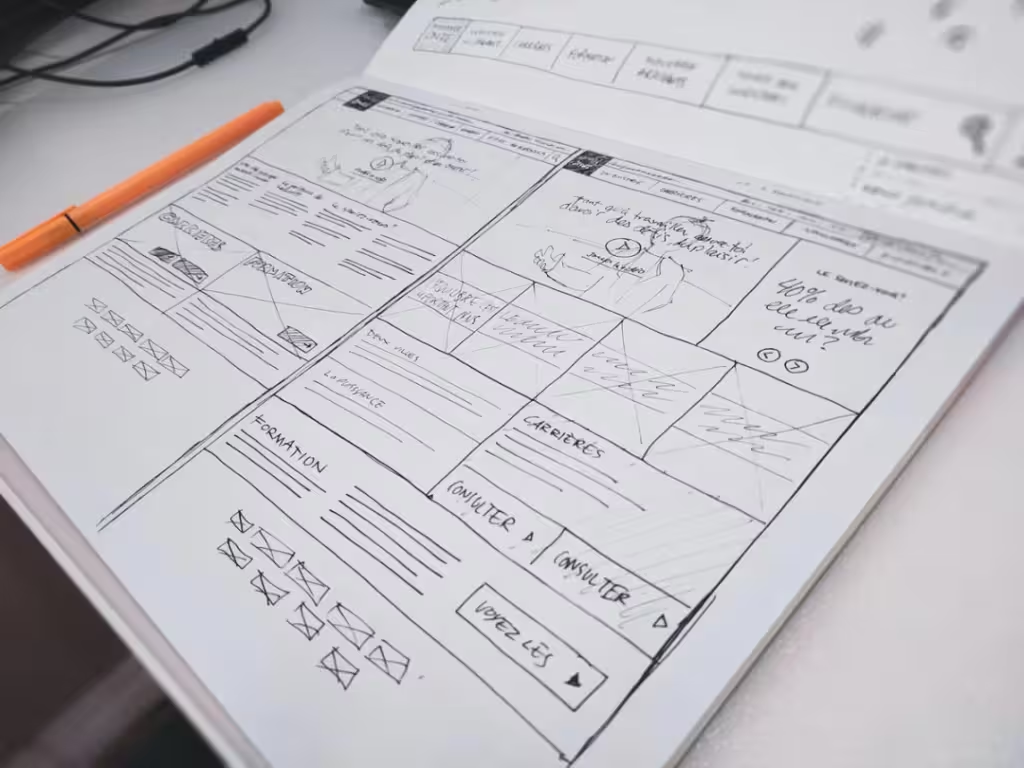
The prototyping phase allows teams to identify weaknesses and quickly refine their concepts. By creating multiple prototypes for real user testing, design teams gain valuable feedback that helps them optimize the solution to better meet the needs of their target audience. This stage also enables teams to gather insights from various sources—such as customers and experts—while the product is still in development, ensuring the final solution resonates with the market. It helps avoid wasting time and resources on ineffective ideas, while fine-tuning the design to deliver a product that truly meets user expectations.
5. Testing
Testing is the final step before launching a product. Teams refine their prototype based on user feedback and then conduct further testing with potential customers to validate or challenge their assumptions about the product’s real-world performance. This process helps uncover any issues early on by observing how users interact with the product. It’s also important to test under varying conditions, such as different device types or network speeds, to identify any potential problems. This stage provides valuable insights, allowing teams to address issues before production begins and ensure the product meets user expectations.
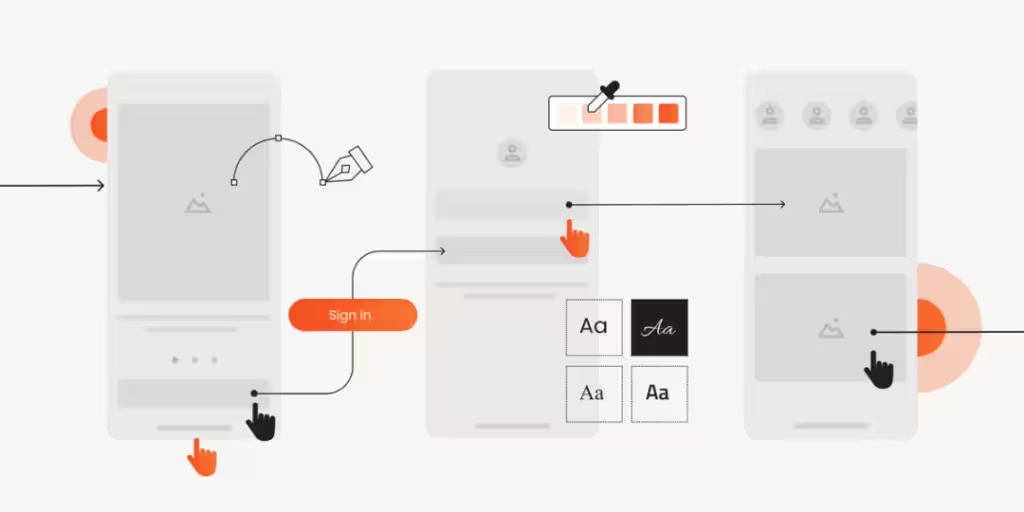
Testing prototypes with real users in real-life situations helps designers create products that fit seamlessly into their environment and deliver a great user experience. This involvement ensures both obvious and subtle issues are identified and addressed before launch, preventing future problems and saving time and resources.
Conclusion
When applied correctly, the design thinking process is a highly effective way to create solutions that truly meet people’s needs. By following each step—empathize, define, ideate, prototype, implement, and evaluate—teams can develop products or services that resonate with users. Ongoing evaluation and user feedback, especially during the empathy phase, provide valuable insights into how customers engage with the solution, helping designers refine and improve future iterations. This approach to problem-solving, regardless of industry or market complexity, makes innovative solutions more accessible and achievable, paving the way for meaningful discoveries and impactful designs.


